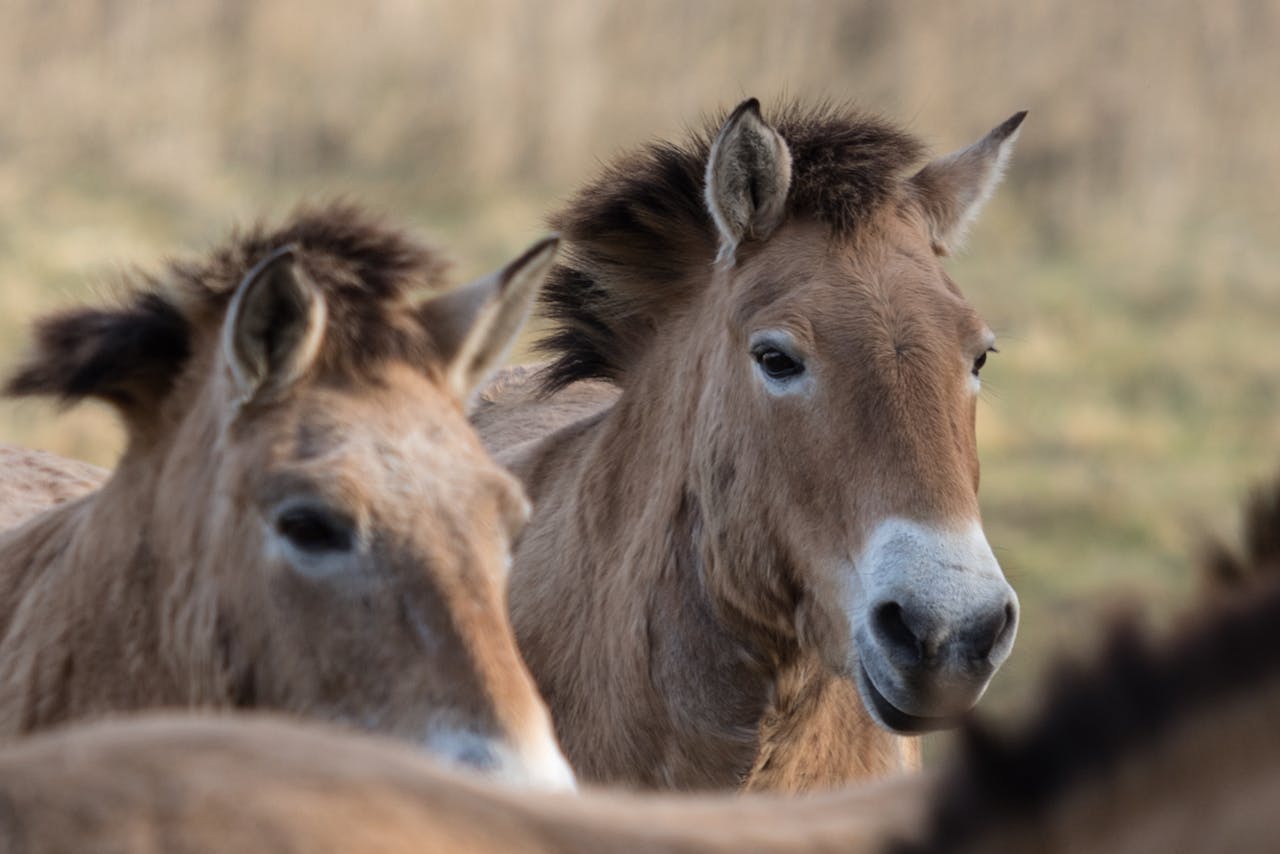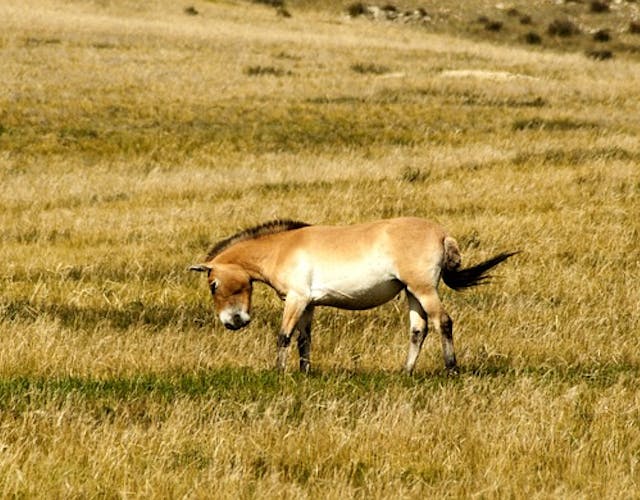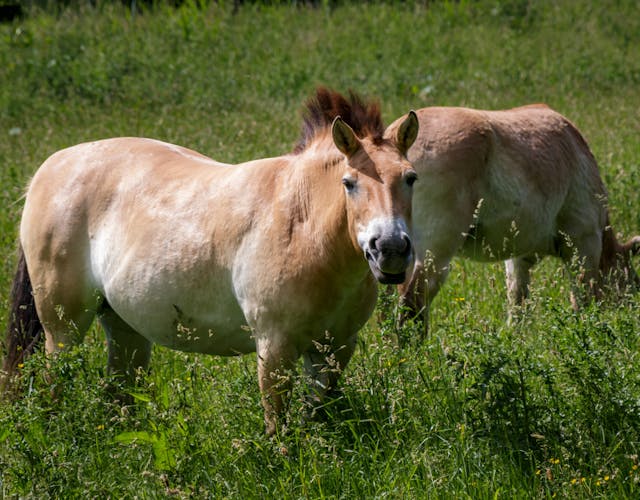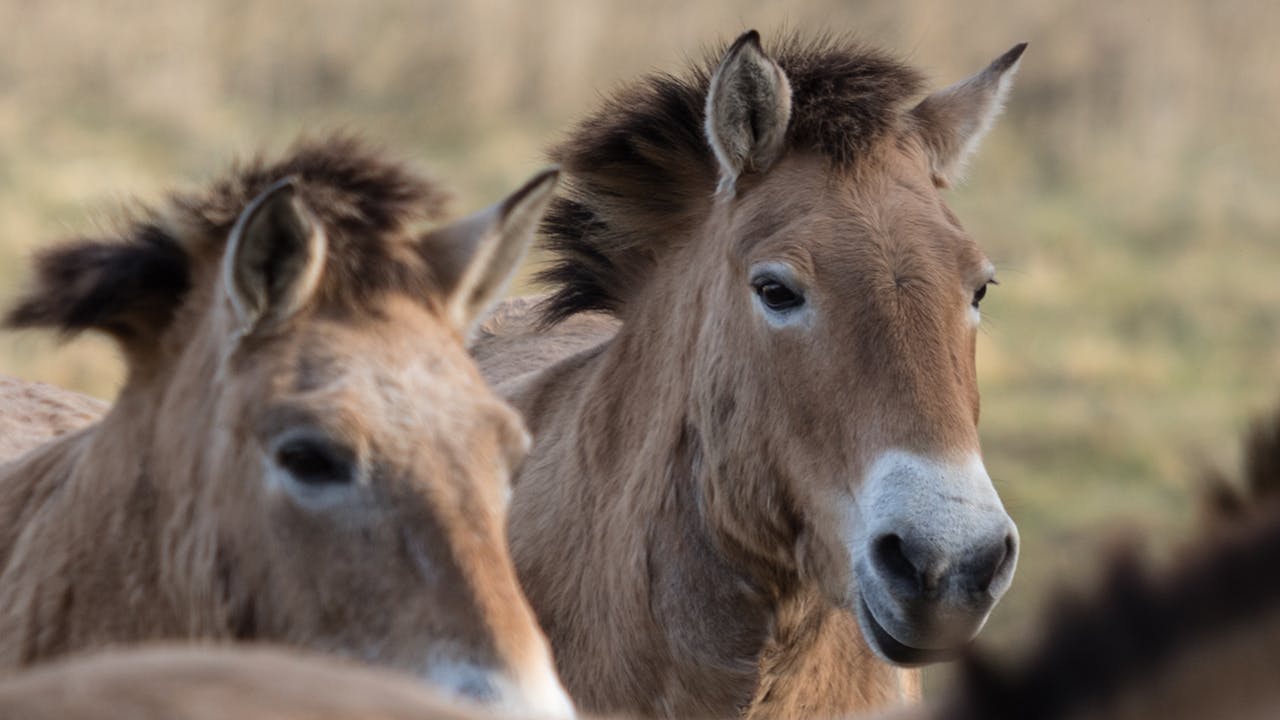Przewalski’s horse
The Przewalski’s horse is the last wild horse that was never domesticated by humans. It is also a true ancient horse and is considered the ancestor of today’s well-known horse breeds. The animal became extinct in the wild in 1968. With a breeding program of Przewalski’s horses living in zoos, the number of Przewalski’s was slowly increased again. Natuurpark Lelystad played an important role in saving this iconic species and served not only as a breeding station, but also as a collecting location for animals that were transported Mongolia in 1992, when the species was reintroduced into the wild.

During the last ice age, Przewalski’s horses were probably found throughout Europe. This can be seen in the many cave drawings that had characteristics of the Przewalski horses found in France and Spain, among others. Officially, the Przewalski’s horse was discovered in 1878 by the Russian general Nikolai Przewalski on a steppe in Mongolia. At that time there were only a few herds with a small number of animals. Due to shrinking habitat and hunting, the Przewalski’s horse became extinct in the wild in 1968.
Name: Przewalski horse Species: Equus ferus przewalskii Family: horses Range: Mongolia and China Height: up to 1.50 meters Weight: max. 400 kg Diet: Herbs and grass Rutting season: May to August

Saving a species
At that time, there were still a number of Przewalski’s living in zoos worldwide. To ensure the survival of the Przewalski horse, a rescue plan was drawn up for those animals. Suitable ‘zoo Przewalski’s’ were collected in a breeding program, with the aim of increasing the numbers of horses so that the animal would not become extinct. Release into the wild was a second goal.
Lelystad Nature Park played a core role in this breeding program. Jan and Inge Bouman and Annette Groeneveld of the ‘Foundation for the Preservation and Protection of the Przewalski Horse’ were concerned about the fate of this ancient horse and set themselves the goal of reintroducing the Przewalski horse in Mongolia. All that was needed was a natural habitat. That place was found in the Natuurpark Lelystad. On July 4, 1987, Professor Dr. Vladimir Sokolov, Chairman of the Russian Academy of Sciences, opened the new area for the Przewalski’s horses in Natuurpark Lelystad.
All animals from abroad first came to Lelystad and were quarantined in the nature park. The first breeding group was set up here, the animals were able to become feral and live in groups again, as they do in nature. The initiators started breeding and naturalizing the animals from various zoos in mid-1987.

Back to Mongolia
In 1992, the number of horses in the breeding program had increased to such an extent that some Przewalski’s horses could be released again on the steppes of Hustain Nuruu National Park in Mongolia. Sixteen animals were released every two years on this 60,000 hectare site. With varying degrees of success: many horses died due to the extreme winters in the area.
The Przewalski’s horse currently still has an ‘endangered’ status. Apparently only 178 horses live in the wild. However, a significantly larger number of animals currently live in zoos and fenced wildlife areas. The animals that did not move to Mongolia at the time now live out their lives in Natuurpark Lelystad. The breeding program in the park has stopped.

A tough life
The Przewalski’s horse lives on open steppes and semi-deserts in Mongolia and China. The animals are real toughs, because life on these steppes is hard. The weather conditions can be extreme. From very high temperatures to heavy winters with lots of snowfall and temperatures well below freezing.
Przewalski’s horses are true grazers. The grass that grows on the steppes is hard and dry and the horses’ molars are completely adapted to this. They have sharp ridges that allow them to eat the grass well and high molars that do not wear out quickly. These hard grasses contain very few nutrients. To get enough nutrients and energy, they have to eat a lot. Przewalski’s horses spend more than half of their time grazing. As a result, the horses spend a large part of the time with their heads down. This makes them vulnerable to predators and other dangers. In order to keep a close eye on everything, the eyes of the Przewalski’s horse are on the side of the head. They can also hear and smell very well.
